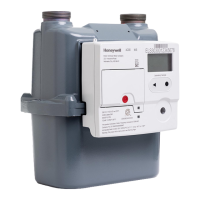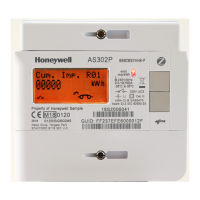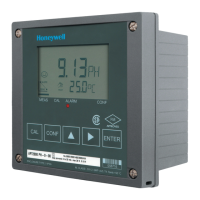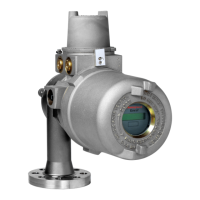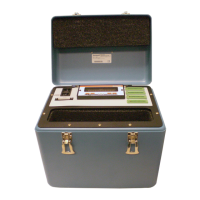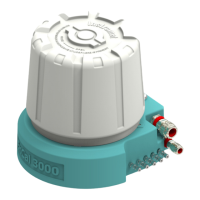128
4. The spectrum in Figure 83 The dip is in the region around 3000 to 3500cm-1. This
indicates that the gas cell's chemical coating needs cleaning or replacing.
5. The ratio of energies at 5000cm
-1
and 2500cm
-1
are being evaluated as additional
evaluation points for the Spectral Balance operation in the future. There is less
absorbance due to water in the air at 5000cm
-1
and 2500cm
-1
, and Honeywell
expects a throughput of at least 20%. However, at this time, they have not likely
throughput data for the Spectral Balance for the 5000::2500 ratio.
10.5.
Service and setup instructions
10.5.1. Solenoid valves
10.5.1.1.
Sample valves
To service the valves, remove one 10-port manifold at a time. First, disconnect the inlet
tube fittings, Figure 6, and remove the pair of screws at each end. Use the handles to lift
the manifold up and out. Lay it on its side. Disconnect the tube fittings that connect to the
two manifold headers and unplug the electrical connector.
The header tube fittings and connector are shown in Figure 5. Move each manifold to a
work area.
Follow these procedures to correct problems:
• Valve fails to open: Replace the solenoid body.
• Valve leaks/fails to seal correctly: Check for loose screws and tighten them. If no
screws are loose, disassemble the valve and clean the metal base. Inspect and clean
or replace the o-rings between the metal base and the manifold.
• If the orifice is wholly or partly plugged, Disassemble the valve and remove the orifice
plug on the side. Clear the orifice using compressed air, tweezers, or alcohol, and
clean all surfaces as needed.
• Any evidence of corrosion: Replace the entire valve.
For valves that are functioning correctly and show no flow restriction, use a screwdriver to
make sure that the screws securing the valves to their base and to the manifold are all
tight (avoid using force to over-tighten the screws).
10.5.1.2.
Cycle valves
Remove the Cycle Valves as a subassembly. First, disconnect the tube fittings connecting
these valves to external components. Next, unscrew the electrical connectors. These
tube-fitting connections and electrical connectors are identified in Figure 9. As you
disconnect each tube and connector, verify it is appropriately labeled. If not, add an ID
label (masking tape marked with a pen makes an excellent temporary label). Remove the
screws connecting the plate and move it to a work area.
Follow these procedures to correct problems:
• Valve fails to open: Replace the entire valve.
• If the valve is sticky, leaks, or fails to seal correctly, Disassemble it and clean the
plunger, seat, and ports. The disassembled metal parts may be wiped with alcohol or
even washed in warm, soapy water. Check the valve to ensure it moves freely in its
guide and the springs flex enough to hold the plunger closed. Place it back into service.
Alternatively, you can replace the valve body and reuse the coil if it works correctly.

